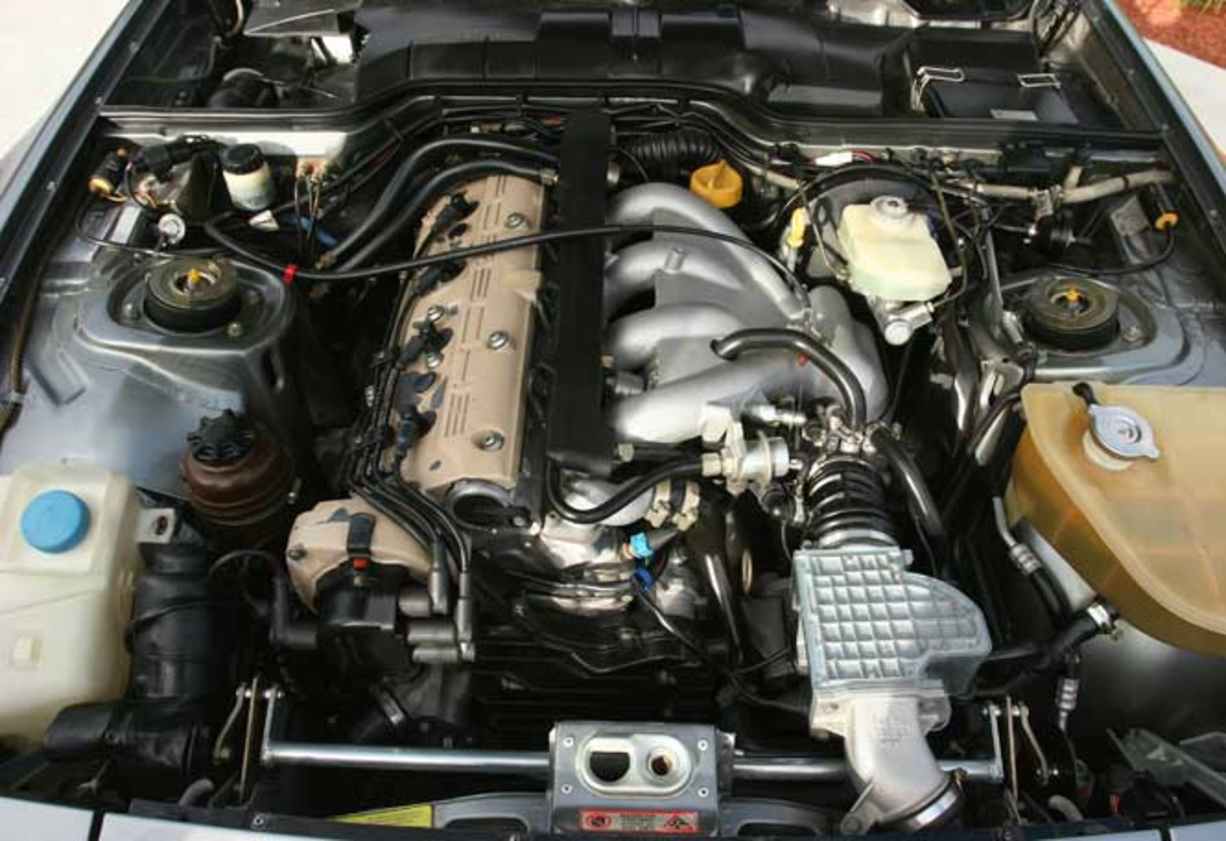When you think of Porsche you can’t help but think of the rear-engine cars that have made the German sports car maker legendary. Rarely do the front-engine cars come to mind, yet they’re very competent sports cars, and now represent great bang for your buck as used cars.
Tradition it seems is so strongly ingrained in the minds of Porsche enthusiasts that the company simply can’t get away from it. The front-engine cars were an attempt by the company to broaden its reach and strengthen its future, but the traditionalists shunned them and the company was eventually forced back to its traditional air-cooled rear engine formula.
The 924 was Porsche’s first front-engine model and was perhaps the mistake the company made, if indeed it did make a mistake in experimenting with front engine cars. Unfortunately the 924 was a lemon, at least in Porsche terms, powered by an Audi 2.0-litre engine. If any other company had produced it the 924 might have been a success, but it was so far from what Porsche was building at the time it was too big a step for Porsche aficionados to accept.
The later 944 and 928 probably suffered because of the 924’s reputation and never quite got off the ground. Pity, because both were great cars.
The good thing is that they’re both now relatively affordable, and make great classic sports cars.
MODEL WATCH
The 944 was launched in Europe in 1981 and arrived here the following year.
With hindsight Porsche probably erred with the 944 in that it was an evolution of the 924. It used the same basic body structure, albeit with unique guards that gave it a tougher look, had the same interior, suspension, and brakes from the 924 Turbo.
Porsche did address one of the perceived problems of the 924 by powering the 944 with a genuine Porsche-designed engine. Essentially half of a 928 V8, the 944’s 2.5-litre water-cooled four-cylinder engine produced a useful 120 kW, and had a very flat and usable torque curve.
In an effort to optimise the weight distribution Porsche engineers mounted the gearbox, either a five-speed manual or three-speed auto, in a transaxle at the rear with a torque tube to connect the gearbox with the engine.
Underneath the 944 featured MacPherson struts and coil springs at the front and semi-trailing arms with torsion bars at the back.
Ventilated front and rear disc brakes with 15-inch alloy wheels were standard equipment.
Porsche pumped the power up a whopping 35 per cent to 162 kW in 1986 by adding a turbo.
The 944S followed in 1987 and sold alongside the 944 and Turbo. Thanks to a new 16-valve head power climbed to 140 kW.
Compression was increased from to 10.2:1 in 1988 and pushed the regular 944's power up to 121 kW.
The Turbo S was also introduced in 1988. Based on the 944 Turbo, the S had a modified turbo and computer which delivered more boost over the entire rev range, the clutch was a heavy-duty unit designed to handle the increased power, the first and second gear sets were specially hardened, a limited-slip differential and transmission oil cooler were standard, shocks and springs were upgraded to Koni coil-over units, 928 brakes were used all around and bushings were of a harder rubber than on the standard Turbo.
The changes that made the Turbo S so special were adapted across the 944 Turbo line-up in 1998 to distance it from the new S2.
The S2 featured a 3.0-litre, 16-valve four-cylinder engine that cranked out 155 kW. The S2 also featured the beefier front panels from the Turbo, and was available as a coupe or convertible.
Standard features on the S2 included alloy wheels, air-conditioning, power steering, ABS and full electrics including a removable sunroof.
IN THE SHOP
A service history is important when buying a 944. Like all Porsches they are very resilient and can tolerate quite a beating if they are well serviced.
The engines are remarkably reliable given that they are often used in competitive events, or simply driven hard on the road, but oil should be changed regularly. Check engine oil for colour and sludge to determine the frequency of changes.
If you find sludge walk away because the car hasn’t been serviced regularly.
It’s also important with the Porsche’s alloy engine that the coolant is regularly changed.
Camshaft belts need to be changed at 100,000 km intervals, and must be changed. A broken cam belt can lead to substantial and expensive internal damage.
Look for oil leaks from the front and rear seals on the engine.
Clutches can be a problem so watch for excessive driveline lash that can mean a clutch replacement.
The galvanised body means rust isn’t a problem with the 944. Even so it’s worth checking around the battery, as this is one area prone to rusting.
While some Porsches are used the way their designers intended, some are pampered so look for one of these. They often have low mileages, which adds to their attraction.
Parts and servicing can be expensive, but shop around and you’ll find Porsche specialists able to take care of your car at more affordable prices.
CRUNCH TIME
Don’t bother looking for airbags in the 944, there weren’t any. Safety came from a combination of brilliant chassis dynamics, and powerful brakes. ABS was added on the S2.
OWNERS’ VIEWS
Greg Turner reckons the 944 is perfect for anyone wanting want a classic, inexpensive sports car that handles and stops brilliantly and can go hard when the adrenaline is high. He says it is extremely rewarding and easy to drive, its rugged construction will give years of trouble-free motoring.
Peter Andressen owns a 1988 944S with 160,000 km on the clock. He says they handle like a dream, and are just the best fun to drive.
Leigh Voges recently bought a 1990 944 S2 which he drives as his daily car. He and his father also use it in the Porsche club events and have it to be great value for money as well as a lot of fun, not to mention competitive for our class.
LOOK FOR
• Traditional Porsche enthusiasts don’t rate them real Porsches
• Great handling with perfect weight balance
• S2 much improved over earlier model
• Good performance
• Durable mechanical package if well serviced
• Parts and servicing can be expensive.
VERDICT
Great sports car at an affordable price that can be used daily or just for weekend getaways.
RATING
80/100
Porsche 944 1982:
| Engine Type | Inline 4, 2.5L |
|---|---|
| Fuel Type | Leaded Petrol |
| Fuel Efficiency | 0.0L/100km (combined) |
| Seating | 4 |
Range and Specs
| Vehicle | Specs | Price* |
|---|---|---|
| S2 | 3.0L, Unleaded Petrol, 5 SPEED MANUAL | $16,390 - $21,010 |
| Turbo | 2.5L, Unleaded Petrol, 5 SPEED MANUAL | $30,140 - $36,300 |
























.jpg)

.jpg)


.jpg)
